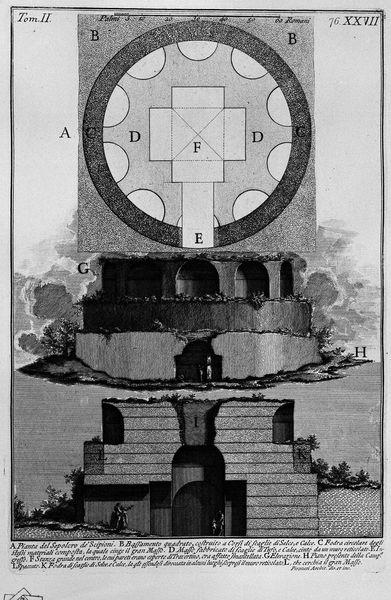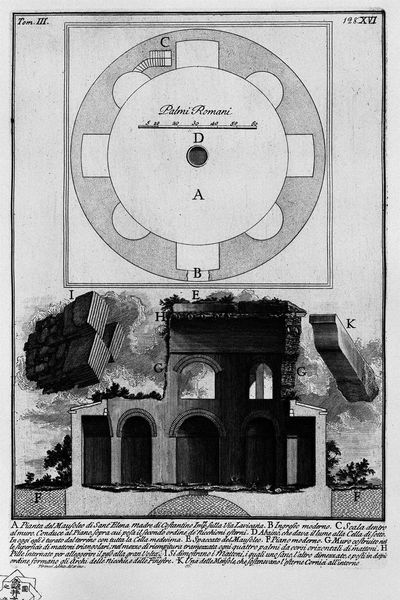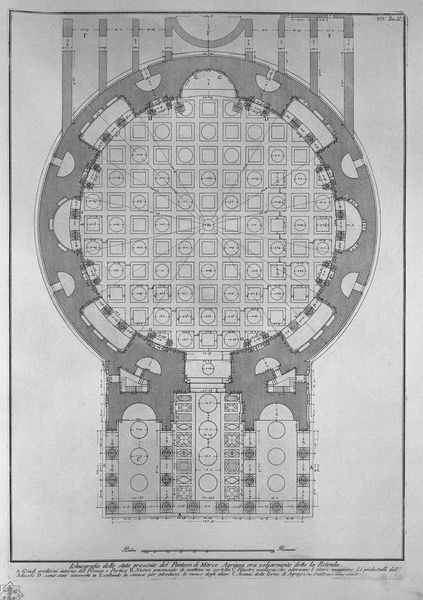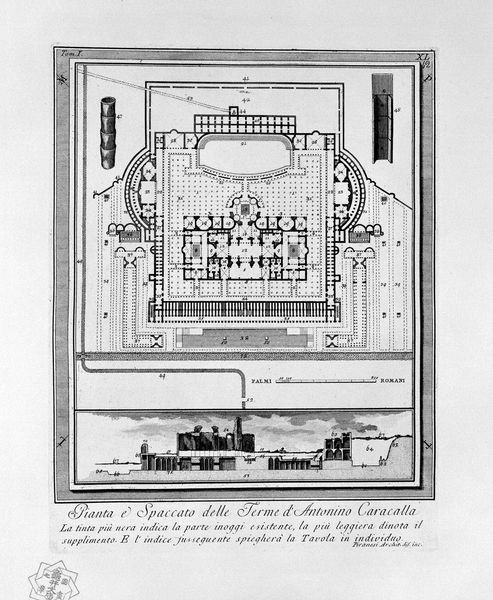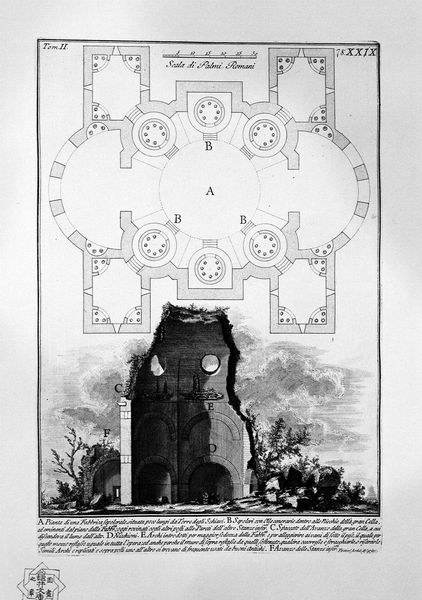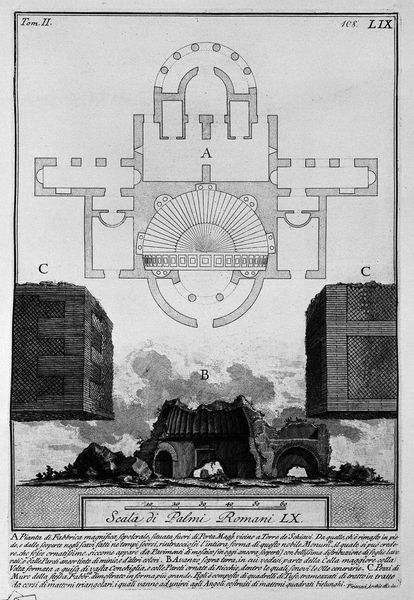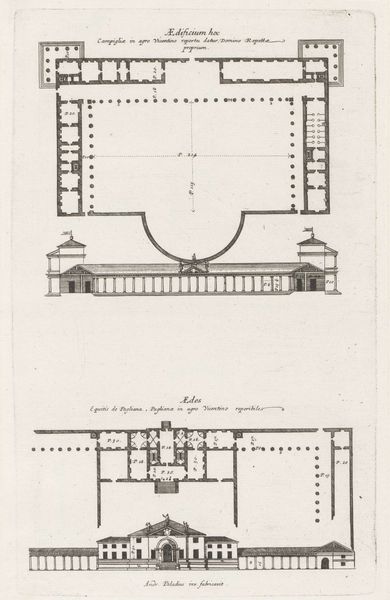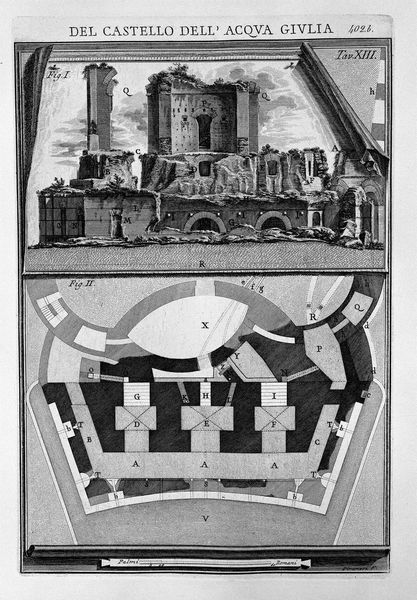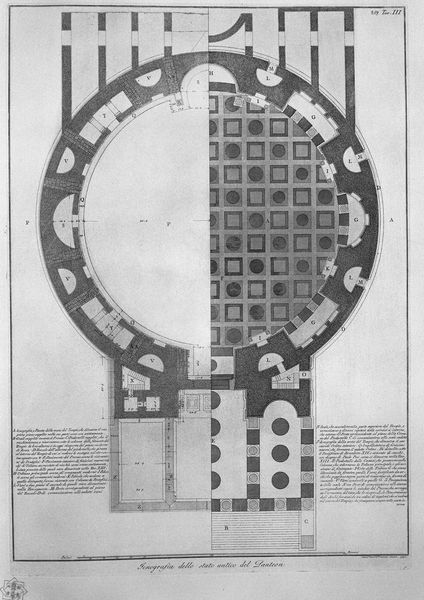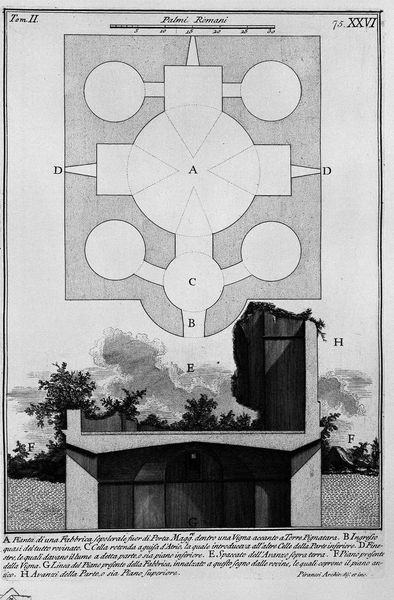
The Roman antiquities, t. 2, Plate XXXVI. Hips and split of the urn itself (figures carved from Barbault). 1756
0:00
0:00
drawing, print, engraving, architecture
#
drawing
# print
#
architectural plan
#
architectural design
#
romanesque
#
geometric
#
architectural drawing
#
architecture drawing
#
engraving
#
architecture
Copyright: Public domain
Editor: This is Giovanni Battista Piranesi’s print from 1756, titled "The Roman antiquities, t. 2, Plate XXXVI. Hips and split of the urn itself." It depicts the architectural plans and elevation of an ancient Roman tomb. It feels like an archaeological record, incredibly precise, yet… melancholy? What do you see in this piece? Curator: Beyond its architectural precision, I see a critical commentary on power, history, and the act of excavation itself. Piranesi wasn't simply documenting Roman antiquities. He was engaging in a dialogue with the past, one laden with the politics of his present. Consider how his dramatic and often exaggerated representations of Roman ruins highlight both the grandeur and the decay of empire. It's a perspective rooted in the understanding that history isn't a neutral narrative, but a battleground of interpretations. Editor: A battleground? How so? Curator: Think about the very act of representing these ruins. Who gets to tell the story? What perspectives are amplified, and which are silenced? Piranesi’s romanticized, almost theatrical depictions could be seen as both celebrating and critiquing the legacy of Rome. And furthermore, let's consider access. Who had access to these images? Who could afford them? How did these depictions impact perceptions of Rome and Roman history among different social classes? The power to represent is, indeed, a power to control the narrative. Editor: That’s fascinating. I hadn’t considered the implications of who gets to document and interpret history in this way. It gives a whole new layer to what I thought was a straightforward architectural drawing. Curator: Exactly! By exploring the socio-political context of Piranesi’s work, we gain a deeper understanding not just of the artwork itself, but also of the power dynamics at play in shaping our understanding of the past. Editor: Thanks for that! Now I see there’s always much more to explore beyond the surface.
Comments
No comments
Be the first to comment and join the conversation on the ultimate creative platform.
